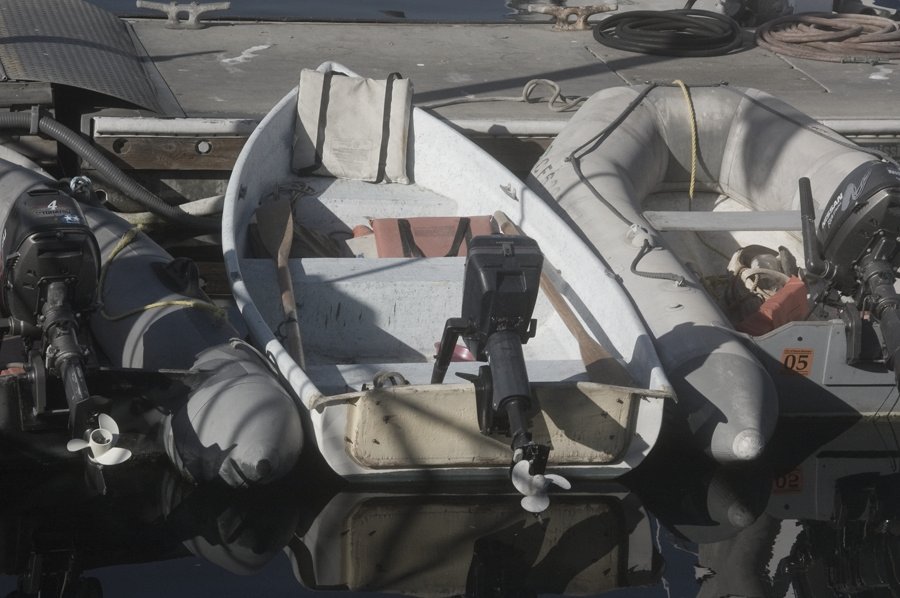 Seaman status can be tricky. Especially when the injury occurs after an employee is fired but before the employee reaches shore.
Seaman status can be tricky. Especially when the injury occurs after an employee is fired but before the employee reaches shore.
The Court of Appeals of Texas, Houston, recently reversed a lower court’s grant of summary judgment to a defendant and against a ship captain who was injured while in transit from a dredge to shore. The facts are interesting, to say the least:
In April 2012, Cepeda captained one of Orion Marine’s dredges. On April 4, when Cepeda’s dredge was operating in the Houston Ship Channel, Cepeda’s supervisor, Jorge Cordova, came aboard and fired Cepeda from his position as captain. Cepeda disputes that his termination was effective immediately, and maintains that Cordova told him he was eligible for another position on the vessel. But it is undisputed that Cepeda then gathered his personal belongings and on Cordova’s order boarded a skiff, which Cordova piloted to a Baytown landing. Cepeda claims that he was injured en route, when the skiff struck a log floating in the water. Cordova denied that any accident took place.
Seaman Status and the Discharge Rule:
The question for the court was whether Cepeda was still a seaman after he was terminated but before he landed on shore. If so, then the former captain may be entitled to “recover for negligence under the Jones Act or for maintenance and cure or unseaworthiness under general maritime law….”
To answer the question, the court went all the way back to a federal Fourth Circuit decision from 1924:
In The Michael Tracy, 295 F. 680 (4th Cir. 1924), the court of appeals addressed a scenario similar to the present one. In that case, the plaintiff had been paid and discharged. Id. at 680. After retrieving his belongings, he attempted to disembark from the ship via an unsecured ladder and fell and broke his arm. Id. In ruling that the plaintiff was entitled to maintenance and cure despite his discharge, the Fourth Circuit held that “the obligation of the ship to furnish maintenance and cure attaches to accidents which happen in the brief interval between the time a seaman is paid off and formally discharged and the subsequent time at which, in ordinary course, he actually gets physically away from her.” Id. at 681. The court concluded that the plaintiff “went on her as a seaman, and for the purpose in hand did not cease to be one until he was safely off her.” Id.
Subsequent courts, including the Supreme Court, have endorsed The Michael Tracy decision. See Aquilar v. Standard Oil Co. of N.J., 318 U.S. 724 (1943); Braen v Pfeifer Oil Transp Co., 361 U.S. 129 (1959); LeBlanc v. B.G.T. Corp., 992 F.2d 394 (1st Cir. 1993). Consequently, the Court of Appeals of Texas concluded that “The Michael Tracy‘s discharge rule–endorsed by the Supreme Court in Aguilar, restated with approval by the Court in Braen and in other federal decisions, and reaffirmed in LeBlanc–is blackletter maritime law.”
But What About Chandris?
Here, the defendant tried to circumvent the discharge rule by arguing that a subsequent Supreme Court case foreclosed seaman status to discharged employees. Chandris, Inc. v. Latsis, 515 U.S. 347 (1995).
In Chandris, the Court concluded that:
[A] two-part test governs seaman status: (1) the employee’s duties must contribute to the function of the ship or the accomplishment of its mission; and (2) the employee must have a connection to the ship in navigation, or an identifiable group of ships, that is substantial in both its duration and its nature. See Chandris, 515 U.S. at 368.
The defendant argued that an employer-employee relationship must exist for their to be seaman status. Because Captain Cepeda had been fired before he was injured, he no longer enjoyed the employer-employee relationship. As such, he did not have seaman status at the precise time of injury. The Court of Appeals disagreed:
We have no quarrel with the proposition that the right to recover under the Jones Act or for maintenance and cure or unseaworthiness arises from an employer-employee relationship between seamen and shipowners. Federal maritime law makes it clear that this is so. See Chandris, 515 U.S. at 364–69, 115 S.Ct. 2172. But it has long been the rule that a discharged seaman may recover as a seaman if injured in the process of quitting the ship. The Michael Tracy, 295 F. at 681. In this case, Orion Marine fired Cepeda from his position as captain while at sea and paid him at least through the end of the next day. It is undisputed that the only work that Cepeda performed at the time was as a seaman. If a seaman is terminated while he is at sea, then he remains a seaman for purposes of the Jones Act, maintenance and cure, and unseaworthiness claims until he returns to dry land. See id.; LeBlanc, 992 F.2d at 399–400. We hold that the trial court erred in granting partial summary judgment against Cepeda, based on its determination that Cepeda lacked status as a seaman.
Cepeda v. Orion Marine Constr., Inc., — S.W.3d —-, 2016 WL 3902467 (Tex. Ct. App. 2016).
Attribution: Photo courtesy of Flickr user Damian Gadal.
